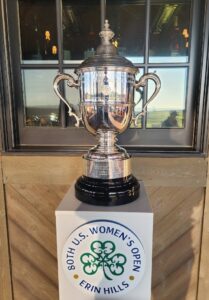By Jason Bruno


Since you’re here, we can safely assume that you have an appreciation for
golf course design. If you’re not aware of the name David McLay-Kidd, then
you have a lot to catch up on, Google him and his course designs. Next, go
book a round on one of his courses. Bandon Dunes, Gamble Sands, or Sand
Valley’s Mammoth Dunes, just get it done – you can thank me later.
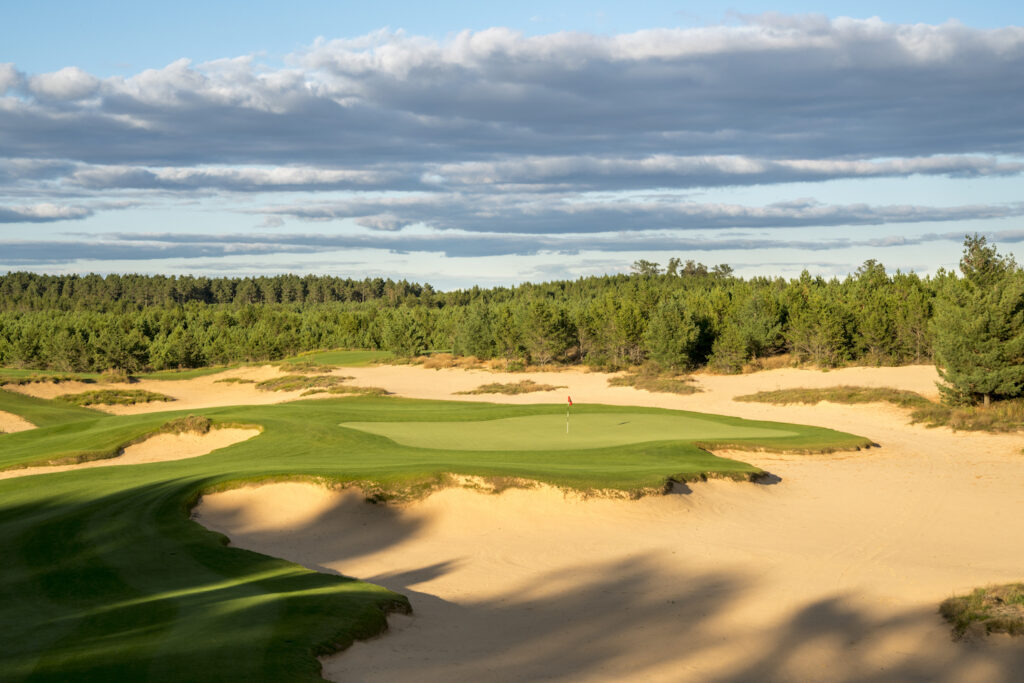

The son of Scottish golf course superintendent Jimmy Kidd, David grew up on
some of the finest terra firma that the British Isles have to offer. Now 50, David
McLay-Kidd has become one of the absolute masters of golf course architecture.
His impressive resume of course designs includes the course that may have had
the biggest impact on American golfers in our lifetime – the original course at
Bandon Dunes. Kidd’s catalog of notable designs is vast and includes such names
as Tetherow in Oregon, Queenwood in west London, and most recently Gamble
Sands that overlooks the Columbia River along the high desert of north-central
Washington.
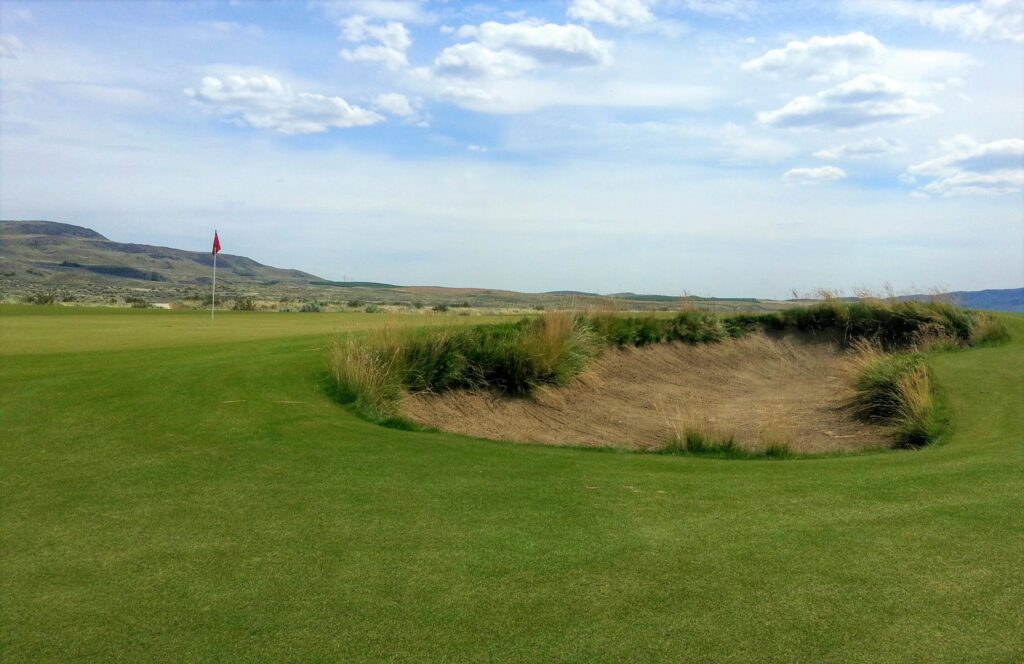

We caught up with DMK during our visit to the Badger state earlier this summer
and then for a follow up (via phone 2 months later – Aug.18th, 2017) as he was
driving back towards Wisconsin after a day spent at Chicago Golf Club with Mike
Keiser, Tom Shapland, and Brad Kinsey (President of Chicago Golf Club).
During our visit to Sand Valley, six holes on Kidd’s new Mammoth Dunes course
were open for preview play (just this past week it was announced that 9 holes
were now open) and Kidd took the role as tour guide and caddie as we discussed
his work on what is the second course at Sand Valley, and a bit about many
subjects including Bandon, what he learned from Tom Watson, and an epiphany
that has changed everything for DMK design . . .
LinksNation: Before we really dig into Sand Valley, and since this is our
first meeting in person, I’d be remiss if we didn’t discuss the phenomenon
of Bandon and the inspiration it has been to so many, including myself. On
behalf of linksters and course design enthusiasts everywhere – Thank You,
most notably for the 16th hole, which is a magnificent design in the ideal
setting, truly a spiritual experience. So a big tip of the hat for what you were
able to do there.
David McLay-Kidd: It’s cool looking back at it 20 years later, I’m 50 this year.
Mike hired me when I was 26, the course opened when I was 30.
LN: How did that come about?
DMK: He (Mike Keiser) wanted to build a British links course. So after lots
of chatting with lots of American designers he went out and sought a British
designer. He wanted someone that was unaffected by the Americanism of golf,
he wanted someone who was so steeped in the tradition of the game that they
really didn’t have any other knowledge other than that. When Mike looked at
my pedigree, I really didn’t have one. My pedigree was only playing golf in the
UK.
LN: Did he know your Dad (Jimmy Kidd) ?
DMK: Yeah he did, he and my Dad are the same age (within two days of each
other). It handily influenced him, my Dad is a superintendent. My Dad and Mike
would speak plainly and between the two of them Mike saw me as the younger
more bullish version of my father. Somewhere in there he saw potential that
nobody else including I could have seen. And so he hired me and I did what I
only knew. I didn’t know anything else, I didn’t know how to create Tom Fazio
bunkers, I didn’t know how to put Pete Dye artifices in. All I knew was I spent
my whole life playing these old courses in the British isles and so I did what I
knew. When everybody in the U.S Ooo-ed and Ahh-ed about Bandon, to me it
was like every other course I had played like Machrihanish, Carnoustie or bits
of North Berwick or Gullane or any course I played as a kid. Why so much
hoopla? If you took Bandon Dunes and parked it on the west coast of Ireland it
would be another great course on the west coast of Ireland. It wouldn’t be the
only one. On the west coast of the United States, it was the only one. Nothing
else like it, and still nothing even close . . .
LN: Poa has krept into the greens at Bandon now, with an exception of Old
Mac. Is that just the way it’s going to be, and with the green surfaces
here you guys decided on Bentgrass?
DMK: It’s the way it’s gonna be at Bandon, that climate is so temperate, so damp,
there’s no way of avoiding it. It’s about a 10-year window, they were all
mint fescue at one point. We had long conversations about the greens here (at
Sand Valley), I certainly debated it with Mike, I’m not sure that Mike ever really
debated it himself. He just said early on that it was going to be bentgrass.

LN: Tell me about this particular parcel of the property at Sand Valley where
you’re creating Mammoth Dunes. You’re right up front here at the clubhouse
as opposed to Coore Crenshaw’s layout that is a bit more remote here at the
resort, how did that come to be?
DMK: When I did the original master plan for this (Mammoth Dunes), I
wanted this spot, as a golf aficionado yourself, I would suggest – and these
are my words alone – that Tom Doak and Coore Crenshaw probably want that
remoteness, as where I gravitated towards the mothership. I wanted to get
to open the doors to all the visitors the way that I did at Bandon. I wanted
to do the same thing for Mike (Keiser) here.


LN: We are standing here on the first tee at Mammoth Dunes, where did the
name come from?
DMK: It was just announced about a month ago (May), it came from Mike.
Certainly, the scale of what we’re building and the size of the dunes – that
dune on your right is 80 feet tall. So the title Mammoth Dunes came from
the scale of the sand dunes. (He points over to another massive dune in the
distance that is so big that the large piece of land moving equipment looks
like a matchbox car on a mountainside).
LN: What we see out there (the landforms), how much of it existed when
you came out for the first site visit ?
DMK: This golf course we moved almost nothing. That abyss through the
middle here, we took that down a few feet and used the material to build
the clubhouse pad, that’s the only dirt on the whole golf course that we
moved. Every other piece that you’re gonna see on these six holes hasn’t
been moved other than being pushed with a dozier a few yards here and
there, but nothing moved.

From this point on it’s no longer a typical Q & A, it’s David and I walking his
six-hole preview of Mammoth Dunes. He is describing his thoughts during the
design process and how he thinks they should best be played (DMK has taken
on the role of looper) . . .

DMK: Ok, here we are on the first tee. I love to be contrarian. So for every
golfer that stares down the first hole of a golf course, they always want to hit
it down the middle right? Well the one place I don’t want you to hit it here is
down the middle, pick a side I don’t care which one, but pick a side. As long as
you don’t hit it down the middle you’re good here. It might be the only opening
hole in golf where down the middle is the bad place to go. (I of course picked
the right side, and pulled it slightly onto the left part of the fairway, and in
typical DMK fashion he says, “that’ll work.”)
Earlier today we were back there (he points in the distance) working on the
fairway on fourteen, and on the other side of that is the tenth green. About 200
yards on the other side is what we’re working on right now. I’m trying to build a
hole that I’ve never tried to build before – It’s a dogleg left, but on a straight line
it’s a 280-yard par 4, so if you saw that on a scorecard you would assume that
it’s driveable right? I’m going to set it up so it’s pretty much impossible to drive
it.
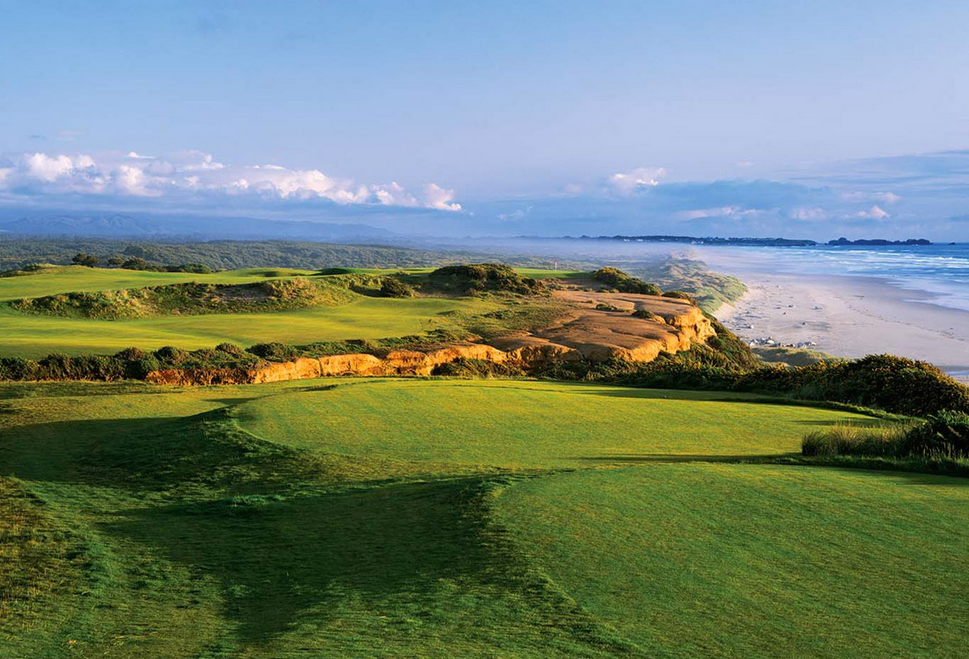

LN: You said 16 at Bandon was never designed to be driveable, and yet most decent players
attempt to drive it, I attempt it every time I’ve played it.
DMK: It never was, the green is totally not set up for that shot.
LN: Can’t argue that, but the solution is to hit it just left of the green pin
high and pitch or chip it on – unless the pin is tucked over that perfectly
placed pot bunker you put there. . .
LN: So when is the target date for the grand opening here on Mammoth Dunes?
DMK: Probably July 1 (2018) as a formal opening, with preview play starting in mid-
May but with restricted numbers. Even now I think they’re only going to allow
50 people a day out here.
LN: How long have these six holes been finished?
DMK: These were all done last year, they were grassed in last September.
This first hole is 375 yards, if you would have gone the other route and
stayed high you would actually have got a little run on the ball and you’d
have a completely open view of the green. You have 153 into the wind, will
play like 165 yards.
LN: I want to talk a bit about your work on Gamble Sands, I was there the
summer of ’15 drove up there the day after working on Josh Lewis’ agronomy
staff at Chambers Bay (U.S Open). It played really firm and fast, and my impression
was that it’s the most playable course I’ve ever experienced, and what I mean by
that is – absolutely any type of player from tour pro to a 30 handicapper can
come go out there and play it and have a great time.
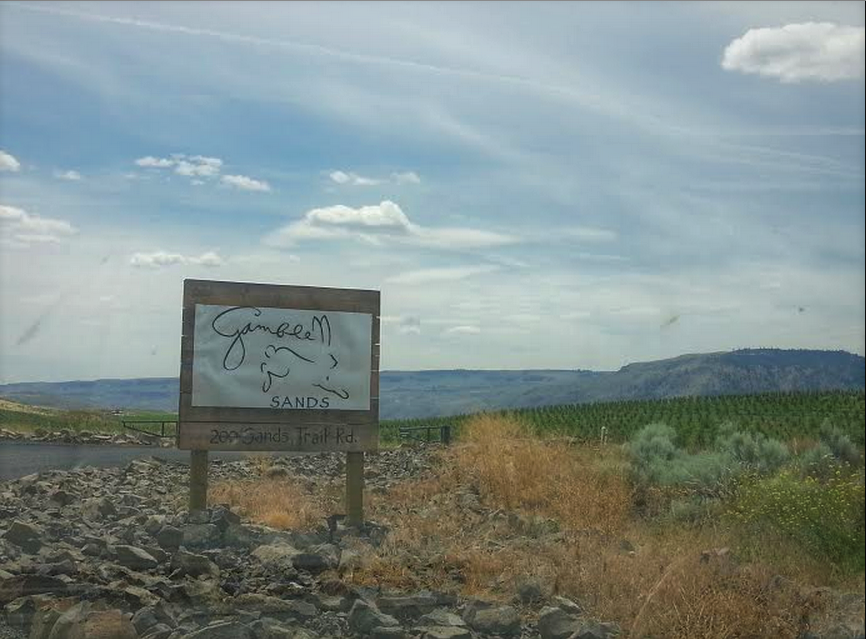
DMK: The takeaway for me is, Casey (Kidd’s design partner at DMK Design)
and I built that in 2012 and we had been experimenting with design ideas for
a few years before that and Gamble was sort of the latest iteration of those
design ideas. Mike Keiser went there and loved it so much that he immediately
hired us to do this.
Mike asked me to speak to one of his groups at Bandon, and I said I’ll happily
come to speak to your group, but only if you play Gamble Sands. So he played it
with Mike Davis (from the USGA) and Tim Boyle (owner of Columbia Sportswear).
He called as soon as he came off 18, and told me, “I’d put Gamble Sands in the
World Top 50″.
LN: I thought the same thing, it was the most fun golf course that I ever played.
(I then two-putted for par at the first on Mammoth Dunes and we moved on to the 2nd).
DMK: The second here is 395 yards. If you can carry the bunker or keep it
right of it, that’s ideal. Keep it to the right here. (After another pulled tee shot)
Ok, you’re down the left again, that’s gonna make it interesting.
I think the premise of golf course architecture is fundamentally wrong. The
teachings of the great architects from 100 years ago were wrong then and
they’re wrong today.
LN: You’re gonna have to give me an example.
DMK: If a shot is not executed, (it has always been thought that) if the ask
of the golf course architect is not met, that shot should be punished. I think
that is a fundamental fallacy, here’s why – the shot in and of itself is the
punishment. Most often if I think up a defense against your best attack, any-
thing less than your best attack is punishment in itself. Let’s take your tee
shot here, you’re now out of position, will you enjoy this hole more or less
if I give you an opportunity for redemption or if I put you in jail?
LN: Certainly more if you give me a chance, of course. No doubt about that.
DMK: But, that opportunity for redemption requires an even better shot than
if you had executed well the first time. On this hole you’re now coming into a
shallow green with a front pin downwind, so for you to get this close for a
birdie putt would require one of the best shots of the day. When you stood on
the tee and pulled it left, you had a feeling of dread, like I pulled it into this waste
bunker and I’m not going to enjoy this hole now. You come up and over the hill
and see that you’re not in the waste bunker, you’re staring right at the flag.
You’ll be looking at your 3 buddies thinking “my money is not in their pocket
yet”. 122 yards left, aim half a stick right of that pin (I hit gap wedge just below
the flag about 15 feet away). Let’s walk over here to the right and let me show
you where you would’ve been had you bloody well done what you were told.
(laughter ensues).
LN: I agree, that tee shot was total rubbish.
DMK: If you had hit a good shot over here I’m gonna give you some run out
and a better position to the green.
LN: So you finish Gamble Sands back in 2012/2013, did you immediately know
that you hit a home run when you finished?
DMK: Casey and I were down in Nicaragua back in 2010, and we built a
course called Guacalito De La Isla, and everyone that came and played
that – loved it. We had this whole epiphany about golf course design.
Instead of just pissing people off, what happens if we just try and help
them and get them to enjoy the game more. So we did a bunch of
stuff down there and it worked great, so we went to Gamble and then
to London and were doing the same stuff. So did we know? We thought
so, but didn’t know for sure until people played it.

(Questions from our Aug.18th, 2017 follow up)
LN: So, You have nine holes Open now on (Mammoth Dunes) ?
DMK: Nine holes are open and holes six, seven, eight, nine, ten and fourteen
are all grassed, so there are only another three holes left and they’ll actually
grass one of those tomorrow morning, so we’re really close. By the end of the
month we should have the whole golf course grassed, then we have another
six weeks or so of final adjustments of little tweaks and nips and tucks and then
we’ll batter down for winter and we hope this winter is kind. Next Spring we’ll
add a few more holes to the preview round and the formal opening will likely
be July 1 of next year.
LN: So, eleven, twelve and thirteen are the last three (holes) that you’re
working on?
DMK: Yep, that’s it. A short par 5, a medium length par 4 and a par 3. The
par 3 thirteenth might be the most visually stunning of all of the holes out
there. Which I know you know is hard to believe, but I really think it might
be.


LN: More so than sixteen?
DMK: More than sixteen. I think that believe it or not I don’t think that
sixteen wouldn’t even make the top 2 of the par 3’s. I think eight and
thirteen outdo it considerably.
LN: When we walked the course, you spoke about designing a short par 4 that
would be “un-drivable”, the tenth, and were you able to create what you set
out to design there?
DMK: Yes. It’s about 300 yards from the tips, it’s a hard dog-leg left. It may be
possible to drive it, but there are some big trees and the green is not designed
to accept a drive – just too much risk. It’s really a layup, but you have to decide
what to lay up with, are you going to lay up with a 7 iron and hit your approach
with a 9 iron, or are you going to hit 3 wood and have a half wedge? The green is
the only one on the golf course with a serious false front, so there’s a little bit of
a knee knocker wedge onto the green.
LN: That leads me to our prior discussion about your time collaborating with Tom
Watson at Beaverbrook Golf Club (outside of London), and what you learned
about course management and how to apply it to your design work. I found it
fascinating, please explain . . .
DMK: It was all about his course management, he explained it in terms of threat
and opportunity. He would counter the threat versus the opportunity, if the threat
was even marginally high, he would almost always discount the opportunity. So for
a golf course designer, we often design holes where there is risk and reward but
we don’t view it in the eyes of someone like Tom Watson. The risk might be where
maybe he’s going to make double bogey and the minute he sees that risk he just
won’t take it, he just sees it as too big a risk – and that was the lesson I learned.
The threat versus the opportunity, the threat has to be relatively low. It just can’t be
double bogey, because he just won’t go for it. The threat has to be a stroke at the
very most, he’s not going to take on a bunker that costs him an entire stroke with
no chance for reprieve. I realized that I had to be measured about how much threat
I put out there versus the opportunity, and that’s what Gamble Sands does. There
is lots and lots of opportunity and the threats are relatively low. The punishment
will match the crime, if you don’t pull it off I’m going to give you a slightly more
difficult lie or a little less view of the pin, or a little bit harder angle but I’m not
going to put you in a 8 ft deep bunker, knee-high grass or make you hunt for the
ball. I’m gonna give you a play, you’re never out of it – there’s always a chance
for redemption.

